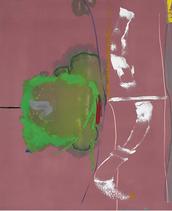Helen Frankenthaler
 Born in Manhattan, New York, Helen Frankenthaler became the leader of the Color Field painters in New York City, emerging in the 1950s under the influence of Jackson Pollock and Willem de Kooning. Her work is a transition from Abstract Expressionism.
Born in Manhattan, New York, Helen Frankenthaler became the leader of the Color Field painters in New York City, emerging in the 1950s under the influence of Jackson Pollock and Willem de Kooning. Her work is a transition from Abstract Expressionism.
She was educated at New York’s Dalton School, and in high school studied with Rufino Tamayo and later with Hans Hofmann. She attended Bennington College. Her family vacationed in Maine where she learned to love open views of land and sea, subject matter and an attitude of expansiveness reflected in her canvases.
With a studio in New York, her mentor became art critic Clement Greenberg who introduced her to most of the prominent 1950s artists including Pollock and DeKooning who, in turn, became her inspirations for gestural technique, Action Painting. From 1958 to 1971, she was married to artist Robert Motherwell.
Her stain painting technique was novel. Rather than painting on a primed canvas, she poured paint over an unprimed surface that allowed the paint to soak into the canvas. This staining and the process involved became her trademark style, and a whole generation of artists, known as Color Field painters, followed her. Her large studio has been in New York City.
She had a brief period when she experimented with sculpture. In the summer of 1972, she worked with Anthony Caro in his studio in London, and she used some of the steel that Caro had acquired from the estate of David Smith. She had first met Caro in New York in 1959, and they had formed a friendship during which she expressed an interest in experimenting with sculpture. During the two weeks, she completed ten welded steel sculptures in abstract style, and titles included Heart of London, Ceiling Horses, Matisse Table, Ten After All and Ceiling Horses. However, after this intense period of sculpting, “Frankenthaler never again muade sculptures in steel, and the sojourn in Caro’s studio was never repeated. The energetic, vital constructions she completed in London leave us wishing she’d gone back often.” (Wilkin). In 2006, Knoedler & Company held an exhibit of the work she completed with Caro.
In 1999, she won the Jerusalem Prize for Arts and Letters, given by the Friends of Israel’s National Academy of Arts and Design.
Partial source:
Karen Wilkin, “Frankenthaler’s Nerves of Steel”, Art in America, May 2007, pp. 184-187